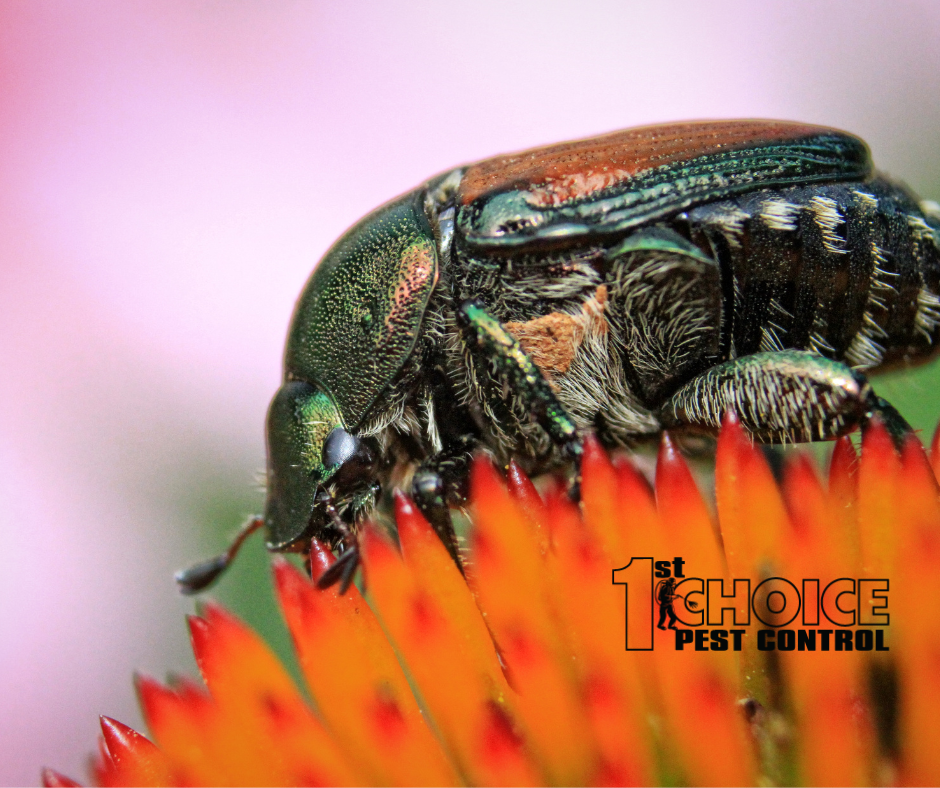Understanding Common Garden Pests and Their Impact: Tips for Organic Pest Control
Maintaining a beautiful and productive garden is a joy for any gardening enthusiast. However, the presence of pests can quickly turn this joy into frustration. To protect your garden from pest damage, it is essential to implement effective pest control measures. Organic pest control methods provide a sustainable and eco-friendly approach to managing pests while ensuring the health and vitality of your plants.
In this blog post, we will explore valuable tips and strategies for protecting your garden from pest damage using organic pest control methods. By adopting these practices, you can maintain a thriving garden without resorting to harmful chemicals or synthetic pesticides. Organic pest control not only preserves the health of your plants but also supports the overall balance of the ecosystem.
In the following sections, we will delve into various aspects of organic pest control, including understanding common garden pests, creating a pest-resistant garden environment, utilizing natural deterrents and traps, implementing cultural practices, and monitoring for early intervention. By combining these approaches, you can create a harmonious and pest-free garden that flourishes naturally.
Organic pest control not only minimizes the negative impact on beneficial insects and wildlife but also ensures the safety of your family, pets, and the environment. It allows you to cultivate and enjoy your garden with the confidence that you are promoting a healthy and sustainable ecosystem.
So, let’s explore effective strategies and techniques for protecting your garden from pest damage through organic pest control. By implementing these tips, you can nurture a thriving garden while respecting nature’s balance and preserving the beauty and productivity of your outdoor space.
Understanding Common Garden Pests:
To effectively protect your garden from pest damage, it is important to familiarize yourself with common garden pests and their characteristics. Here’s a closer look at some pests you may encounter:
1. Aphids: These tiny, soft-bodied insects cluster on the undersides of leaves and suck plant sap, causing wilting, stunted growth, and distorted leaves. They can multiply rapidly and attract ants with their honeydew secretions.
2. Slugs and Snails: These mollusks are nocturnal and feed on leaves, stems, and fruits, leaving behind slimy trails. They can cause significant damage to young seedlings and tender plants.
3. Caterpillars: The larvae of butterflies and moths, caterpillars feed voraciously on foliage, resulting in defoliation and weakened plants. They can be particularly destructive to vegetable gardens.
4. Beetles: Various beetles, such as Japanese beetles and Colorado potato beetles, chew on leaves, flowers, and fruits. They can quickly defoliate plants and cause significant damage.
5. Whiteflies: These tiny, white insects congregate on the undersides of leaves, sucking sap and causing yellowing, wilting, and stunted growth. They also secrete honeydew, attracting ants and promoting the growth of sooty mold.
6. Rodents: Mice, rats, and other rodents can damage garden plants by gnawing on stems, roots, and fruits. They can also create burrows that disturb the soil structure and uproot seedlings.
7. Slugs and Snails: These mollusks are nocturnal and feed on leaves, stems, and fruits, leaving behind slimy trails. They can cause significant damage to young seedlings and tender plants.
By understanding the behavior and characteristics of these common garden pests, you can better identify and address potential infestations. Early detection allows for prompt action, minimizing the extent of damage and preventing pest populations from spiraling out of control.
Remember to regularly inspect your plants, paying attention to signs of pest activity such as chewed leaves, distorted growth, or the presence of pests themselves. This proactive approach enables you to take timely measures to protect your garden and preserve the health of your plants.
Creating a Pest-Resistant Garden:
Creating a garden environment that is less attractive to pests is an effective approach to organic pest control. By implementing the following strategies, you can minimize the risk of pest infestations and promote the health and resilience of your plants:
1. Proper Plant Selection:
– Choose plant varieties that are naturally resistant to common pests in your region. Research and select cultivars known for their resistance to specific pests or diseases.
– Diversify your plantings to discourage the spread of pests. Interplanting different crops or incorporating a variety of flowers and herbs can help disrupt pest life cycles and reduce the concentration of pests on any one plant.
2. Companion Planting:
– Explore the concept of companion planting, where certain plants have natural properties that repel or deter pests. For example, planting marigolds near vegetable crops can deter aphids and other insects.
– Interplant beneficial plants that attract beneficial insects, such as ladybugs or lacewings, which feed on pests. For instance, planting dill, fennel, or yarrow can attract beneficial insects to control aphids and caterpillars.
3. Crop Rotation:
– Implement crop rotation techniques to prevent the buildup of pest populations. Rotating crops each season helps disrupt the life cycles of pests, as they may rely on specific host plants.
– Avoid planting crops from the same family in the same location each year. This reduces the likelihood of pests overwintering or continuously infesting the area.
4. Soil Health:
– Maintain healthy soil by adding organic matter, such as compost or well-rotted manure, to improve soil fertility and structure. Healthy plants are more resilient to pest attacks.
– Ensure proper soil drainage to prevent waterlogged conditions that can attract pests like slugs or root rot pathogens.
By implementing these practices, you create a garden environment that is less appealing to pests and more conducive to the health and vitality of your plants. Remember that prevention is key, and maintaining a balanced ecosystem within your garden promotes natural pest control by encouraging the presence of beneficial insects and reducing the risk of pest infestations.
Natural Pest Deterrents and Traps:
Utilizing natural pest deterrents and traps can be an effective way to control pests in your garden without resorting to chemical pesticides. Here are some methods to consider:
1. Beneficial Insects:
– Attract beneficial insects, such as ladybugs, lacewings, and hoverflies, to your garden. These insects feed on pests like aphids, caterpillars, and mites, helping to keep their populations in check.
– Plant flowers that provide nectar and pollen for beneficial insects. Examples include daisies, asters, and yarrow, which act as a food source to support these beneficial insects throughout their life cycles.
2. Homemade Sprays:
– Create natural pest control sprays using ingredients like garlic, neem oil, or soap solutions. These sprays can be effective against soft-bodied insects like aphids or mites.
– Dilute the ingredients according to the instructions and spray them on the affected plants. Ensure thorough coverage, including the undersides of leaves where pests often reside.
3. Physical Barriers:
– Use physical barriers to protect your plants from pests. For example, cover vulnerable plants with fine mesh netting or row covers to prevent insect pests from accessing them.
– Install fences or barriers to deter larger pests like rabbits or deer from entering your garden space.
4. Traps and Baits:
– Set up traps and baits to capture specific pests. Sticky traps can be effective in catching flying insects, while beer traps can attract and drown slugs or snails.
– Place traps strategically near vulnerable plants or areas where pests are known to be active. Regularly check and remove trapped pests to prevent further infestations.
Remember to regularly monitor your garden for signs of pests and adjust your pest control methods accordingly. Natural pest deterrents and traps work best when used in combination with other organic pest control strategies, creating a holistic approach to pest management.
Cultural Practices for Pest Control:
Implementing proper cultural practices in your garden can help prevent and control pest infestations. Here are some practices to consider:
1. Proper Watering and Drainage:
– Water plants appropriately, ensuring they receive adequate moisture without creating waterlogged conditions. Overwatering can attract pests like fungus gnats or lead to root rot.
– Use irrigation methods that target the root zone of plants, minimizing water contact on leaves, which can create a conducive environment for diseases or pests.
2. Regular Weed Control:
– Keep your garden free from weeds, as they can attract pests and provide hiding places for them. Weeds can also compete with your plants for resources, reducing their vigor.
– Regularly remove weeds by hand or use organic mulches to suppress weed growth and conserve moisture in the soil.
3. Sanitation and Garden Cleanup:
– Practice good garden hygiene by removing fallen leaves, decaying plant material, and debris regularly. These materials can serve as breeding grounds for pests or harbor diseases.
– Dispose of infested plant debris away from your garden to prevent the spread of pests or diseases.
Implementing these cultural practices helps create an unfavorable environment for pests while promoting the overall health and vigor of your plants. By practicing proper watering, weed control, and garden cleanup, you reduce the risk of pest infestations and create an environment that supports the success of your plants.
Monitoring and Early Intervention:
Regular monitoring of your garden is essential for early pest detection and intervention. Here’s what you should do:
1. Regular Inspections:
– Regularly inspect your plants, focusing on the undersides of leaves, stems, and fruits, where pests often hide.
– Look for signs of pest activity, such as chewed leaves,
distorted growth, or the presence of pests themselves.
– Identify pest infestations early to prevent them from spreading and causing extensive damage.
2. Prompt Action:
– Take immediate action at the first sign of pest infestation. Depending on the severity, options may include manually removing pests, pruning infested parts, or applying organic pest control methods.
– Remove and destroy heavily infested plants to prevent the spread of pests to healthy plants.
3. Regular Maintenance:
– Maintain regular garden maintenance routines, such as watering, weeding, and fertilizing, as healthy plants are more resilient to pests and diseases.
– Monitor the effectiveness of your pest control methods and make adjustments as necessary.
By monitoring your garden closely and intervening early, you can prevent pest populations from escalating and causing severe damage. Regular inspections allow you to address pest issues promptly, minimizing the need for extensive intervention and reducing the risk of crop loss or damage.
Conclusion:
By implementing organic pest control methods, you can protect your garden from pest damage while maintaining a healthy and sustainable environment. Understanding common garden pests, creating a pest-resistant garden, utilizing natural deterrents and traps, practicing cultural methods, and monitoring for early intervention are key strategies in organic pest control.
Remember, organic pest control is a holistic approach that considers the overall health of your garden ecosystem. By fostering a balanced environment with beneficial insects, proper plant selection, and cultural practices, you can reduce reliance on chemical pesticides and promote a thriving and resilient garden.
By following these tips and implementing organic pest control strategies, you can enjoy a garden that thrives naturally, free from the harmful effects of pests. Embrace the principles of organic gardening and create a harmonious space where plants and beneficial insects coexist in perfect balance.



 Service Request
Service Request